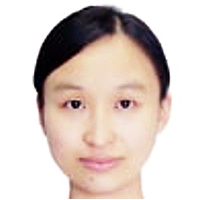Value of Speckle Tracking Echocardiography in Prediction of Left Ventricular Reverse Remodeling in Patients with Chronic total Occlusion Undergoing Percutaneous Coronary Interventions
Published on: 28th December, 2023
Background: Revascularization procedures for chronic complete occlusion (CTO) are technically challenging but aim to improve left ventricular (LV) function. The aim of this study is to evaluate the value of global longitudinal strain (GLS) measured by 2D-speckle tracking echocardiography( 2D-STE) in the assessment of LV reverse remodeling in patients with CTO undergoing revascularization by percutaneous coronary intervention (PCI).Methods: Our study included 54 patients with CTO treated by PCI. We evaluate LV systolic function by measurement of left ventricular ejection fraction (LVEF), left ventricular end-systolic volume (LVESV), and the GLS within 24 hours before the PCI and after 3 months post-procedure. Results: The mean age of the patients was 56.65 ± 7.65 years; 74.1% were males. There was a significant improvement in the LVESV (p < 0.001), LVEF (p < 0.001), and GLS (p < 0.001) at 3 months post-PCI, and by multivariate regression analysis, the GLS was the single most significant predictor of LV reverse remodeling post revascularization (p < 0.001).Conclusion: Revascularization of coronary CTO lesions by PCI is associated with a significant improvement in regional and global LV function. The GLS measured by 2D-STE is a strong predictor of LV reverse remodeling post-CTO interventions.
Current Situation of Municipal Solid Waste Management in the Urban and Peri-urban of Phnom Penh, Cambodia
Published on: 21st December, 2023
Currently, the amount of solid waste is increasing in the world, especially in developing countries. Although Solid Waste Management (SWM) involves and collaborates with many stakeholders, management is still flawed. SWM in the urban and suburbs of Phnom Penh has encountered a number of obstacles and challenges. Seeing these problems, the government has decided to reform the solid waste management in Phnom Penh in 2019. After the reform, the provision of waste collection, transportation, and cleaning services in urban and peri-urban has changed significantly, while the urban and peri-urban receive collection services 95% and 80%, respectively. To be more precise one study on the current situation of SWM in urban and peri-urban Phnom Penh was conducted to understand the current situation and to identify challenges of SWM for the urban and the peri-urban in Phnom Penh. Two kinds of data were collected 1) preliminary data was collected from interviewing people in target areas by using structured questionnaires, and 2) secondary data was obtained from existing various sources. 330 respondents were selected with qualitative and quantitative analysis by using SPPS 28.0.1.1 and Microsoft Excel 2019. People use plastic bags instead of bins, triggers, and bags to store the waste.79.5% of the people are willing to pay the collection fee. It was found that the situation of SWM is better, however, the collection time is still blurred. SWM in Phnom Penh has faced four main challenges: financial, road infrastructure, landfill, and people's participation. SWM in urban and peri-urban, still have some problems such as the packaging and storage of the waste. and the problem of scavengers tearing the waste bags makes the garbage clutter.
Studies on the Influence of Charge Inducer and it’s Combination with P-gp Inhibitor to Improve the Oral Bioavailability of Nimodipine via Submicron Lipid Emulsions
Published on: 21st December, 2023
Background: Nimodipine (NM), is a dihydropyridine calcium channel blocker with poor oral bioavailability (BA) of about 13% due to first-pass metabolism and P-gp efflux. Objective: The present work aimed to study the influence of the charge inducer and its combination with P-gp inhibitor to improve the oral bioavailability of NM by developing a suitable delivery system of Submicron Lipid Emulsion (SME). Methods: Five SME formulations of NM were prepared by homogenization followed by ultrasonication. Prepared SMEs were characterized for particle size, PDI, Zeta Potential (ZP), Entrapment Efficiency (EE), and drug content. In vitro, release studies were performed in 0.1N HCl and pH 6.8 phosphate buffer by open tube method. The physical stability of all NM–SMEs was tested by the individual effects of centrifugation, dilution (desorption stress), and storage. Bioavailability studies were conducted on male Wistar rats after oral administration of NM suspension and F1 to F5 SME formulations. Results and conclusion: Five NM- SMEs were developed with a mean size ranging from 93 - 137 nm, Zeta potential of – 26 ± 1 mV (negatively charged), +45.8 to +46.3 mV (positively charged), and PDI of 0.15 - 0.25. The in vitro release studies showed that relatively more cumulative percentage release of NM – SMEs in 0.1N HCl than in pH phosphate buffer during 24 hours. The physical stability of NM–SMEs indicated that they were stable to the effects of centrifugation, dilution, and storage. Pharmacokinetic (PK) studies showed that the oral bioavailability of NM in F4 SME was significantly higher than that of all other formulations. Taken together, the results indicated the development of a stable lipid-based carrier, F4 SME to improve the oral bioavailability of this drug by minimizing first-pass metabolism due to lymphatic transport, reducing the efflux by P-gp inhibition, and further, by increased uptake of the positively charged F4 SME globules by enterocytes. Future: The research study findings increase the possibility of developing NM F4 SME by the pharmaceutical industry for the patient’s benefit.
Update on the Clinical Applications of Mesenchymal Stem Cells
Published on: 21st December, 2023
Mesenchymal stem cells are heterogenous adult multipotent stromal cells that can be isolated from various sources including bone marrow, peripheral blood, umbilical cord blood, dental pulp, and adipose tissue. They have certain regenerative, anti-inflammatory, immunomodulatory, immunosuppressive, antimicrobial, and other properties that enable them to have several therapeutic and clinical applications including treatment of various autoimmune disorders; role in hematopoietic stem cell transplantation and regenerative medicine; treatment of skin, pulmonary and cardiovascular disorders; treatment of neurological and eye diseases; as well as treatment of various infections and their complications. Different factors including donor age, biological source, route of administration, and signaling pathways have an impact on the functions and consequently the clinical applications of mesenchymal stromal cells. The products of mesenchymal stem cells such as extracellular vesicles and exosomes reproduce the biological effects and most of the therapeutic actions of the parent stem cells. Genetic engineering and the use of specific mesenchymal stromal cell products have improved their clinical efficacy and decreased their adverse effects. However, despite the recent progress in the use of mesenchymal stem cells, the clinical application of these cells in the treatment of several diseases still faces real challenges that need to be resolved. The current status of mesenchymal stem cells and the controversies related to their clinical utilization in various disease conditions will be thoroughly discussed in this review.
An Innovative Therapy by Changing the Gut Microbiome for the Dual Post-Operative Complications of the Recurrent Methicillin-Resistant Staphylococcus aureus (MRSA) Infections in the Residual Type II First Branchial Cyst and Facial Nerve Palsy
Published on: 20th December, 2023
A very unusual, interesting, and challenging case of a 24-year-old female who was born with three openings in the neck. The patient had chronic abdominal gaseous distention, recurrent abdominal pain, and constipation since early infancy. The patient presented in emergency with acute painful red, hot, and tender swelling in the left upper cervical area. Laboratory studies showed high inflammatory markers and a provisional diagnosis of abscess with a sinus was made. The patient underwent an emergency incision and drainage. Sinus recurred and a sinogram showed it to be a residual cyst in the left submandibular salivary gland. The total cyst excision was attempted with resultant recurrence and grade IV facial nerve palsy. Post-operatively recurrent infections caused by Methicillin-resistant Staphylococcus aureus (MRSA) required several courses of oral and intravenous broad-spectrum antibiotics with several hospital admissions with no resolution in sight. Subsequent ultrasound and magnetic resonance imaging showed a residual infected cyst, cutaneous sinus, and a fistula opening in the left ear canal. A diagnosis of branchial cyst type II of the first brachial cleft remnant with a fistula was established with bilateral branchial fistulas of the second branchial remnants and the associated colorectal hypoganglionosis based on radiological studies. The patient refused any further operative interventions. Therefore, the option of conservative treatment of hypoganglionosis with holobiotics consisting of prebiotics, probiotics and postbiotics, laxatives, dietary changes, lifestyle modifications, and dietary supplements started. All antibiotics were stopped. These therapies resulted in the resolution of residual first branchial remnants and recurrent MRSA infections with the improvement in the facial nerve palsy from grade V to grade III-IV together with an excellent cosmetic and functional result. The patient is doing well at follow-ups being infection-free for 18 months and repeat contrast-enhanced computed tomogram (CECT) has shown complete resolution of the residual cyst, sinus, and fistula with fibrosis.
Models for Long-Term Care Policy: What the U.S. Can Learn from Other Countries
Published on: 20th December, 2023
The need to provide Long-Term Care (LTC) for growing elderly populations is a public policy issue in all industrialized countries. Unlike other OECD countries, the U.S. lacks a foundation for universal LTC benefits. Much can be learned by examining other industrialized countries. LTC systems. In this paper, we will examine how other countries' provide LTC services for their glowing elderly populations, finance the costs of LTC services, determine eligibility for services, and encourage and support informal caregivers.
Success, Survival and Prognostic Factors in Implant Prosthesis: Experimental Study
Published on: 19th December, 2023
The primary objective of this study was to detect the success and short-term survival rate of dental implant prosthetic therapy. The valuation of a possible relationship between the general and local clinical conditions of the patients (presence of risk factors and type of dental implant-supported prosthesis) and the satisfaction perceived by the patient, with success and survival of implant devices was investigated.The sample trial consisted of 23 patients, for a total of 50 dental implants supporting a prosthetic therapy. Preliminarily, an analysis of averages and frequencies of the anamnestic data was presented, as numbers and percentages. The implant success rate was calculated by assessing whether the implants fulfilled the success criteria defined by the Pisa Consensus Conference. The ANOVA test was used to check whether there was an association between the success of the implant device, the anamnestic data collected, and the type of prosthesis supported by the implants. Finally, the survival rate was calculated using the Kaplan - Meier method.The 2-year success rate of 50 implants was assessed at 98%. The 2-year survival rate was 97%. Finally, sex, age, compensated diabetes, a smaller and equal number of cigarettes per day (10 per day), the BOP, and the type of titanium dental implants supported by prosthesis, do not determine a change in success and are therefore not adequate parameters to predict the outcome of implant success. Following the results obtained, it is appropriate to continue the research by expanding the clinical observation times in order to obtain more solid scientific and clinical evidence.
Forensic Comparison of Textile Fibre for Identification using X-ray Diffraction Technique
Published on: 19th December, 2023
This study delves into the forensic examination of textile fibers for identification through the application of the X-ray diffraction (XRD) technique. With the textile industry producing an array of materials, both natural and man-made fibers, the need to distinguish between them for forensic purposes becomes paramount. The primary objective of this research is to identify unique characteristics in fiber samples, differentiating between branded and non-branded company textiles. The focus is placed on fresh, unused cloth fibers obtained directly from shops. The study encompasses two broad categories of fibers: natural (such as cotton, silk, and wool) and man-made (including nylon, rayon, and polyester). Samples from both branded and non-branded textiles undergo analysis using XRD, a sophisticated method capable of revealing the crystallographic structure of materials. Results obtained from the XRD analysis unveil intensity peaks at various levels and degrees, providing distinctive patterns for individualization. Even within the same fiber category, such as polyester and cotton, discernible differences in intensity peaks facilitate the identification process. This research contributes to the advancement of forensic techniques by offering a reliable means of identifying textile fibers. The utilization of XRD not only allows for the differentiation between natural and man-made fibers but also enables discrimination among textiles produced by different companies. The implications of this study extend to forensic investigations, where the ability to precisely identify fibers can provide valuable evidence in criminal cases involving textiles.
Kidney Biopsy in Autosomal Dominant Polycystic Kidney Disease
Published on: 19th December, 2023
Proteinuria is an easily quantified biomarker of kidney disease and often a sign of glomerular pathology. Significant proteinuria is uncommon in cystic kidney diseases and should be further evaluated to exclude the presence of another simultaneous kidney disease. While renal biopsy is a valuable part of the diagnostic evaluation of proteinuria, careful consideration of risks and benefits is necessary before proceeding in a patient with bilateral renal cysts. We report the case of a man with Polycystic Kidney Disease (PKD) who was found to have nephrotic-range proteinuria. An ultrasound-guided kidney biopsy revealed evidence of Focal Segmental Glomerulosclerosis (FSGS), which was attributed to hyperfiltration-related injury in the context of extensive kidney cysts. Genetic testing did not reveal a cause of FSGS and showed a variant of uncertain significance in PKD1. We use this case to highlight three important issues that are applicable to patients with PKD: the role of diagnostic evaluation for proteinuria in cystic kidney disease, the feasibility of kidney biopsy despite the presence of bilateral renal cysts, and the roles and limitations of genetic testing in cystic kidney disease and FSGS.
A Mini Review of Newly Identified Omicron Sublineages
Published on: 18th December, 2023
The ongoing COVID-19 pandemic has seen the evolution of the SARS-CoV-2 virus, resulting in the emergence of various concerning variants with unique biological characteristics. As the pandemic continues, it will be crucial to promptly evaluate the potential of any new variant to cause severe illness. The severity of the latest Omicron sublineages, including BA.5, XBB, BQ.1.18, BA.2, BA.2.75, and EG.5.1, is currently under assessment. This system provides valuable and essential information for rapidly assessing the threat posed by new versions of the virus.




